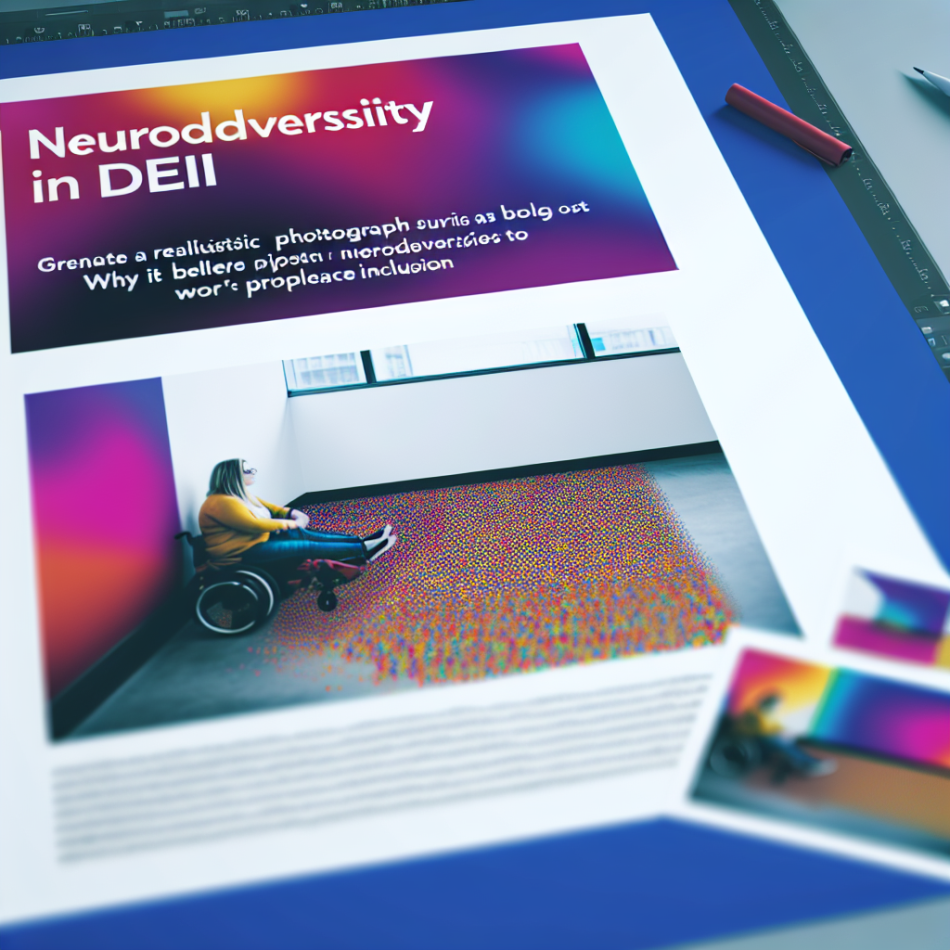Why Neurodiversity Deserves a Seat at the DEI Table
Diversity, Equity, and Inclusion (DEI) initiatives have become central to modern corporate strategies, yet one critical aspect remains conspicuously absent in many conversations: neurodiversity. While companies increasingly prioritise race, gender, and sexuality, the unique perspectives and needs of neurodivergent individuals—such as those with autism, ADHD, or dyslexia—are frequently overlooked. This article explores why neurodiversity must be integrated into DEI frameworks and how businesses can foster truly inclusive workplaces.
The Neurodiversity Gap in DEI Strategies
Neurodiversity refers to the natural variation in human brain function, encompassing conditions like autism, ADHD, dyslexia, and others. Despite affecting an estimated 15-20% of the global population, neurodivergent individuals face systemic barriers in employment, from biased hiring practices to inaccessible workplace environments. Traditional DEI programmes often fail to address these challenges, focusing instead on visible diversity markers. This oversight perpetuates exclusion, limiting both organisational potential and social progress.
Why Neurodiversity is Overlooked
Several factors contribute to the exclusion of neurodiversity in DEI discussions. Firstly, misconceptions about neurodivergent conditions persist, with many viewing them as "disabilities" rather than differences. This stigma leads to underdiagnosis and a lack of workplace accommodations. Secondly, neurodiversity is often invisible, making it easier for companies to ignore compared to more apparent forms of diversity. Lastly, limited awareness and training leave managers ill-equipped to support neurodivergent employees, creating cycles of misunderstanding and exclusion.
The Business Case for Inclusion
Embracing neurodiversity isn’t just a moral imperative—it’s a strategic advantage. Neurodivergent individuals often possess exceptional skills in pattern recognition, problem-solving, and creative thinking. Companies like Microsoft, SAP, and JP Morgan Chase have pioneered neurodiversity hiring programmes, reporting benefits such as:
- Enhanced innovation: Diverse cognitive approaches drive unconventional solutions.
- Higher productivity: Tailored roles leveraging unique strengths improve performance.
- Broader talent pools: Tapping into underutilised demographics addresses skill shortages.
These successes underscore the economic value of inclusive practices, challenging outdated notions of “standard” employee profiles.
Building a Neuroinclusive Workplace
Creating environments where neurodivergent employees thrive requires systemic change. Key steps include:
- Revisiting recruitment: Replace rigid interview processes with skills-based assessments. For example, autism-friendly hiring might involve task-based evaluations instead of social-heavy interviews.
- Flexible work arrangements: Offer options like remote work, adjustable lighting, or noise-cancelling headphones to accommodate sensory needs.
- Training and advocacy: Educate teams on neurodiversity to reduce stigma and foster allyship. Mentorship programmes can bridge communication gaps.
- Personalised support: Collaborate with employees to design individualised accommodations, such as clear written instructions or structured feedback.
These measures not only benefit neurodivergent staff but also cultivate a culture of empathy and adaptability for all employees.
Overcoming Implementation Challenges
While the path to neuroinclusion is clear, businesses often face hurdles. Resistance from leadership, budget constraints, and a lack of expertise stall progress. To address this, organisations can:
- Partner with neurodiversity advocacy groups for guidance and resources.
- Start with pilot programmes to demonstrate ROI before scaling initiatives.
- Integrate neurodiversity metrics into existing DEI reporting frameworks.
Transparency and accountability are vital—companies must track outcomes and iterate strategies based on employee feedback.
Conclusion: A Call for Holistic Inclusion
True diversity extends beyond visible traits to embrace the full spectrum of human cognition. By integrating neurodiversity into DEI agendas, companies unlock untapped potential, drive innovation, and align with principles of equity. This shift demands proactive education, structural flexibility, and a commitment to challenging biases. As workplaces evolve, those prioritising neuroinclusion will not only lead socially but thrive economically—proving that diversity, in all its forms, is a catalyst for progress.
